Cloonee House, Ballinrobe, Co. Mayo is now accepting offers
Cloonee House on the shores of Lough Carra in Ballinrobe, Co Mayo is for sale and the stunning centuries-old property boasts a fascinating history.
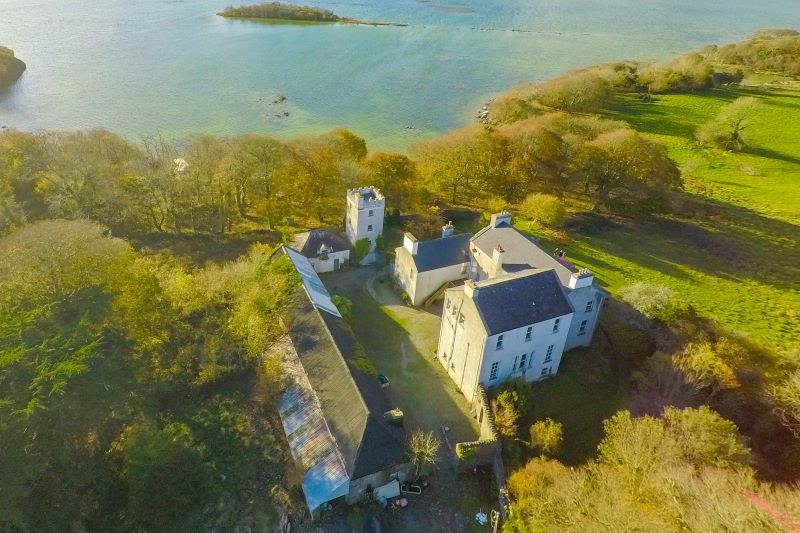
Cloonee House (Premier Properties Ireland)
Read More: Irish castle brings you back in time with the day-to-day Lord of the Castle experience
Auctioneer Helen Cassidy is managing the sale of Cloonee House through Premier Properties Ireland.
Situated on about ten acres, which includes its own Lake Island, Cloonee House has five bedrooms and two bathrooms that feature “fine period features and fabulous lake views.”
The sellers note that there is an “extensive” garden level/basement area that has the potential for renovation and development.
Externally, there is a “charming” courtyard area which is divided into Wilde's Tower House, consisting of four floors and battlements that give views over the lake and property, and the "delightful" Cloonee Coach House, which has living accommodations spread over two levels.
Further adding to the appeal of the already desirable property, there is a wooden pier on the lake with glass and wood artists/writer’s studio.
The sellers say that coming through the long driveway through the woods on the approach to Cloonee House is like returning to a bye-gone era. There is an immediate feeling of being in two centuries at once and the modern world does not intrude in any way.
From the current gateway of the house, the driveway sweeps around dramatically with unimpeded views of the lake directly ahead and to the right, all framed by magnificent beech trees that stretch from the gardens of the house to the lake.
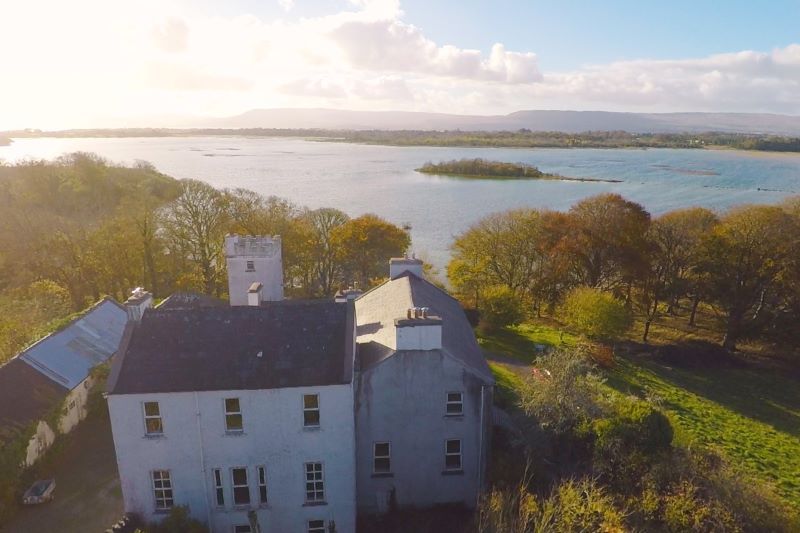
Cloonee House (Premier Properties Ireland)
Read More: Irish castle dating from 1450 and restored to its former glory is now for sale
History of Cloone House
Cloonee House, completed in 1757, was built as a hunting lodge on the shores of Lough Carra for the Browne family of Westport House.
The House and attendant grounds were designed, in classic country-house style, by Richard Cassells, who was also an architect of Westport House, Powerscourt, and Leinster House.
The Cloonee House demesne originally consisted of about 500 acres and was fully walled with a gate-lodge, boathouse, walled garden and orchard. Along with the fishing, deer, pheasant, and duck would have been hunted on the grounds in those days.
Cloonee House is a rare and still well-preserved example of a designed landscape surrounding a house of deceptive Georgian simplicity.
The beech trees frame the lake ensuring a spectacular view over rolling pastures from the steps of the house. Nowadays, the house and attendant grounds are strictly protected structures.
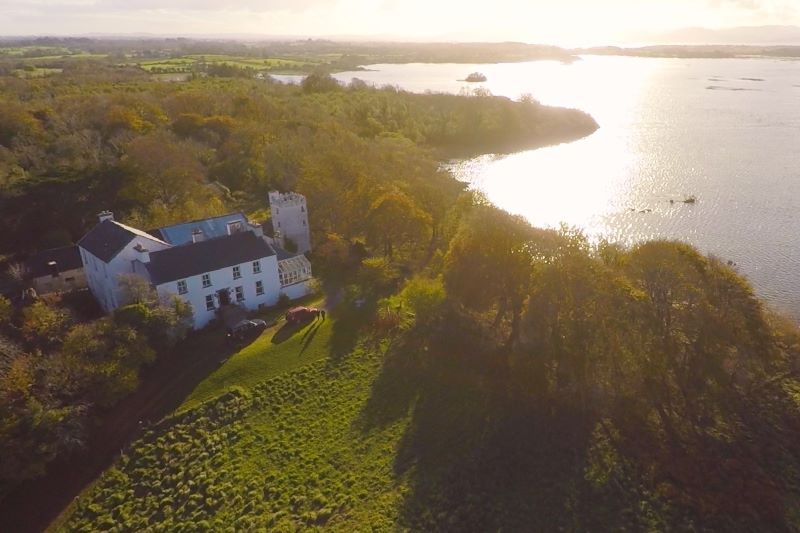
Cloonee House (Premier Properties Ireland)
Read More: This County Down farmhouse has a lake and mountains on its doorstep
Social and Literary Associations of Cloonee House
Cloonee House was used as a hunting lodge by Lord Altamont until 1810 when it was further extended with the addition of two fine wings including a ballroom.
The house then passed into the ownership of the Blake family, who are honored among the tribes of Galway.
George Moore, novelist, artist, and founder of the Abbey Theatre, met his future wife Mary Blake at a function in the ballroom of Cloonee House, her family home. Moore's famous novel 'The Lake' is set at Lough Carra and refers to Cloonee House as a 'haven for birds and tranquillity'.
The owners of Cloonee House (The Blakes) and of Moorehall (The Moores) and other such Irish families of the area including the Wildes of Moytura House (near Lough Mask), socialized and entertained each other in their lakeside houses regularly. There are many contemporary accounts of the summer ball season and garden parties by the lake at Cloonee House.
Guests would travel between functions by boat as well as by carriage. In those days the winters were more severe, Lough Carra would often freeze over and social visits between the big houses in winter could be facilitated by ice-skates and ice-sleds!
Oscar Wilde was at school between 1864 and 1871 at Portura Royal School in Enniskillen, spending the summer months at Moytura House. According to various biographies, the Wilde brothers played with the young George Moore at Moorehall and at Cloonee House during the summer holidays.
Lady Augusta Gregory, a patron of WB Yeats and a founder of the Abbey Theatre, was a member of the Persse family of Roxborough House. She was related through marriage to the Blake family of Cloonee and was a frequent visitor to Cloonee House. The other founder of the Abbey Theatre, Edward Martyn of Tulira Castle near Loughrea, was a regular guest of George and Mary Moore at Moorehall and at Cloonee House.
The Moore, Blake, and Wilde families, their descendants, relatives through marriage, friends, and associates were part of the major social, cultural and political history of Ireland, not least the Irish cultural and literary revival.
It is known that DH Lawrence spent some months at Cloonee House in 1919 as a guest and availed of its peace and tranquillity to write part of his novel "Women in Love."
A more recent owner, Major Ruttledge, wrote the definitive ornithological text 'Birds of Ireland' while living there. The grounds of the house are a natural wildlife and bird sanctuary and Ruttledge was a familiar sight to locals scouting the lakeshore with his binoculars and notebook.
Read More: This dreamy thatched cottage in the Irish countryside could be yours
You can get a closer look at Cloonee House here:
If you could move anywhere in Ireland, where would it be? Let us know in the comments!
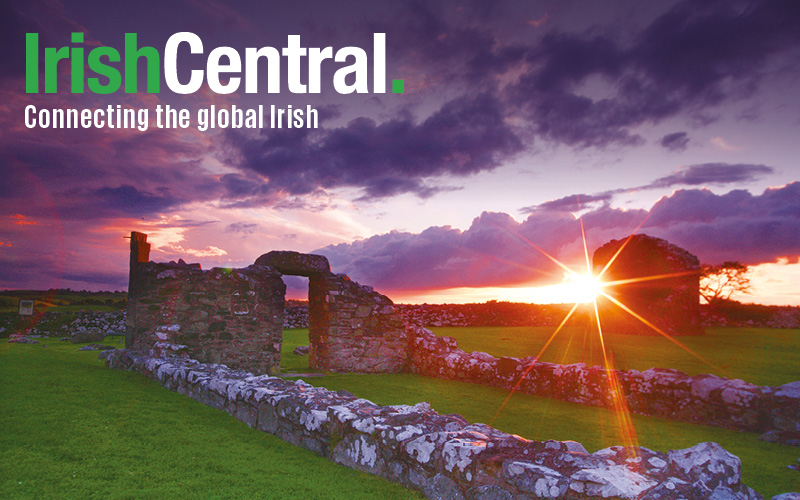


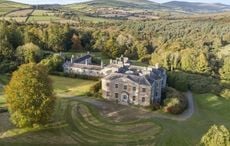
Comments